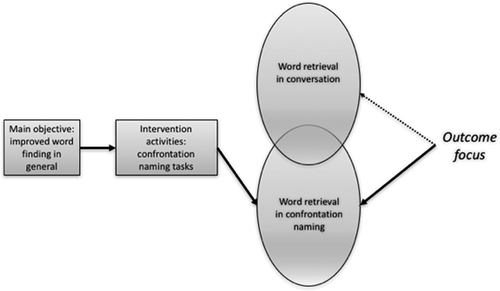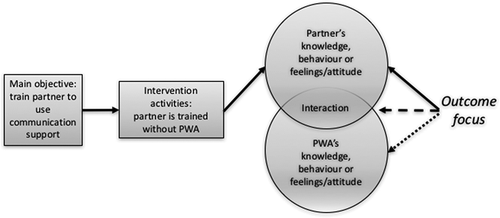Figures & data
Table 1. Examples of differences between CPT approaches, and between methods of outcome evaluation.
Figure 1. Visual model inspired by Coster (Citation2013) of a hypothetical type of anomia intervention, where therapy focuses on confrontation naming tasks. The projected proximal outcomes are likely to be effects relating to word retrieval in confrontation naming (full arrow). Possible effects relating to word finding in conversation would be dependent on generalization and seem to be more distal to the tasks and activities of the intervention (dotted arrow).

Figure 2. Visual model of a hypothetical type of CPT, which exclusively targets the CP. The projected proximal outcomes are likely to be effects relating to the communication partner (full arrow) or his or her interaction with the PWA (dashed arrow), whereas effects relating to the PWA seem to be more distal to the tasks and activities of the intervention (dotted arrow).

Table 2. Two different types of CPT approaches describing well-aligned main objectives, intermediate goals, activities and tasks in intervention and possible proximal and distal outcomes to measure.
